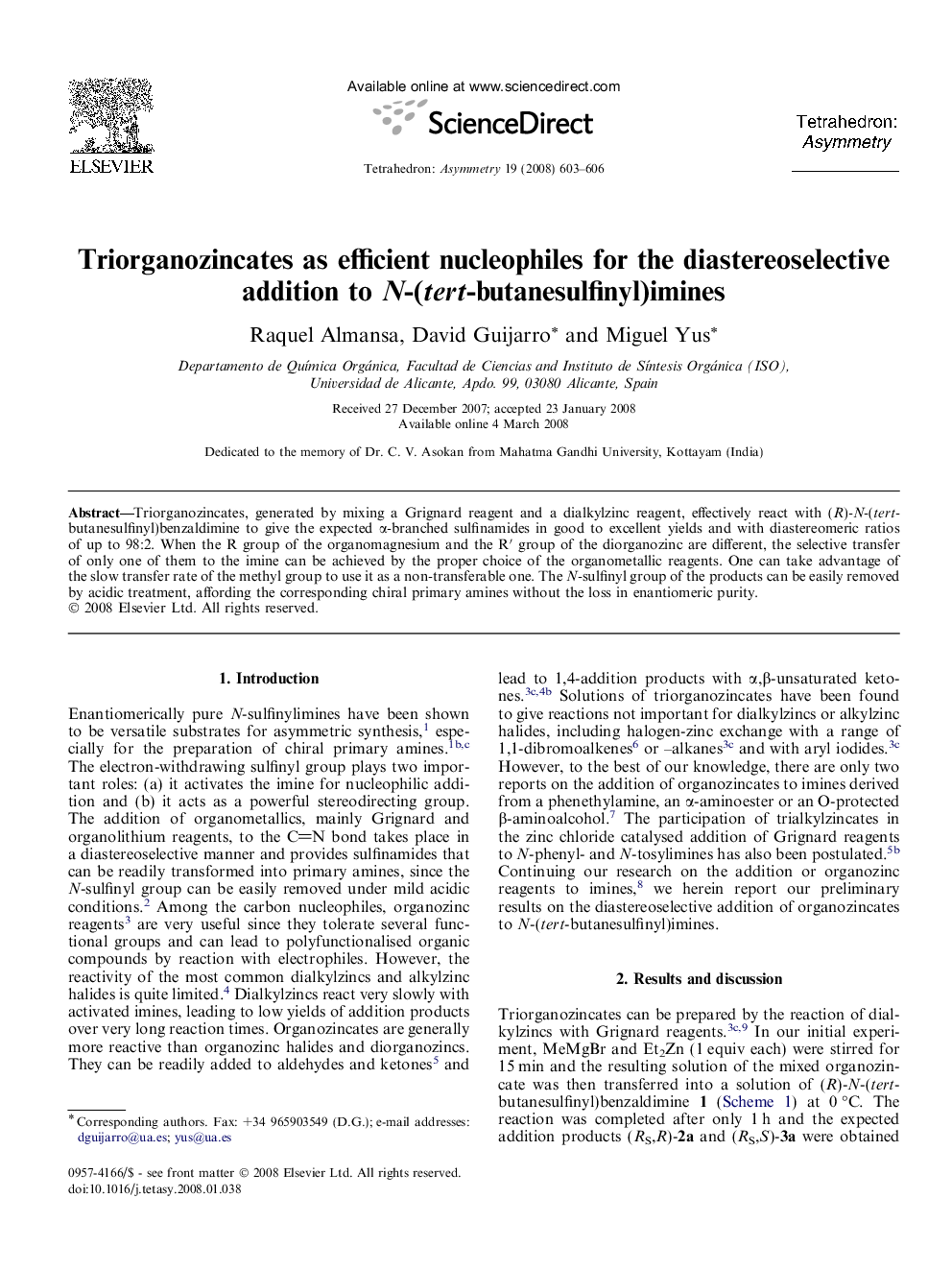| کد مقاله | کد نشریه | سال انتشار | مقاله انگلیسی | نسخه تمام متن |
|---|---|---|---|---|
| 1350271 | 980433 | 2008 | 4 صفحه PDF | دانلود رایگان |

Triorganozincates, generated by mixing a Grignard reagent and a dialkylzinc reagent, effectively react with (R)-N-(tert-butanesulfinyl)benzaldimine to give the expected α-branched sulfinamides in good to excellent yields and with diastereomeric ratios of up to 98:2. When the R group of the organomagnesium and the R′ group of the diorganozinc are different, the selective transfer of only one of them to the imine can be achieved by the proper choice of the organometallic reagents. One can take advantage of the slow transfer rate of the methyl group to use it as a non-transferable one. The N-sulfinyl group of the products can be easily removed by acidic treatment, affording the corresponding chiral primary amines without the loss in enantiomeric purity.
Figure optionsDownload as PowerPoint slide
1-Phenylpropan-1-amineC9H13NEe = 90%[α]D20=+11.9 (c 1.1, CHCl3)Source of chirality: asymmetric synthesisAbsolute configuration: (R)
1-Phenylhexan-1-amineC12H19NEe = 92%[α]D20=+4.0 (c 1.6, EtOH)Source of chirality: asymmetric synthesisAbsolute configuration: (R)
2-Methyl-1-phenylpropan-1-amineC10H15NEe = 88%[α]D20=+6.4 (c 0.6, CHCl3)Source of chirality: asymmetric synthesisAbsolute configuration: (R)
1-Phenylprop-2-en-1-amineC9H11NEe = 90%[α]D20=+9.3 (c 1, CHCl3)Source of chirality: asymmetric synthesisAbsolute configuration: (R)
Journal: Tetrahedron: Asymmetry - Volume 19, Issue 5, 18 March 2008, Pages 603–606